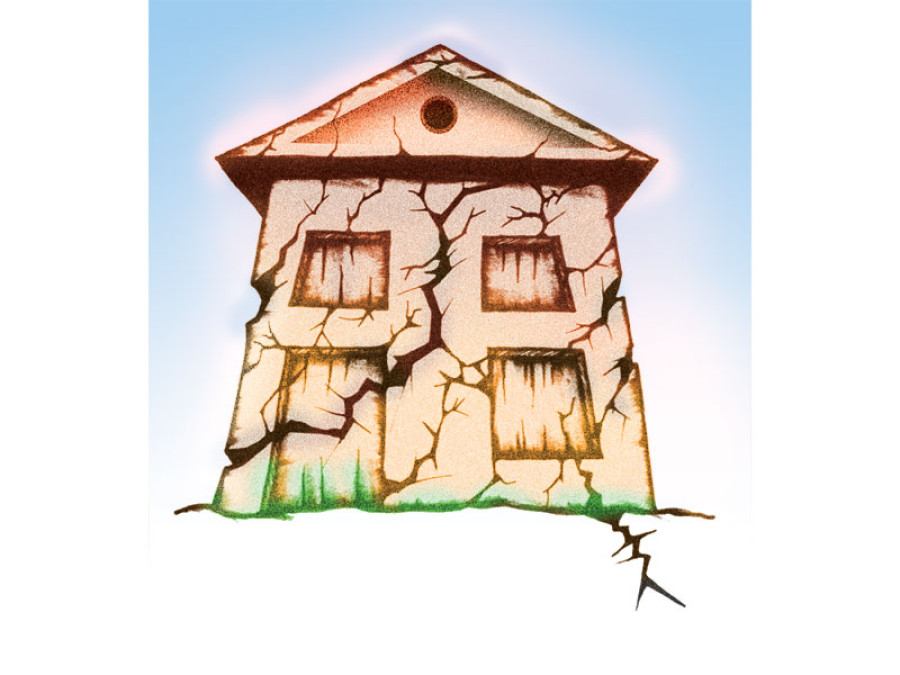Opinion
A test of will
Working hand in hand and rebuilding this country for the better will slowly heal our wounds
Sakun Gajurel
The destruction brought upon by the April and May earthquakes is the evidence that the country was not well-prepared for the long-anticipated disaster. The quakes have taught several valuable lessons to the Nepal government and Nepali people. First, it has taught us that there is a need for disaster preparedness in the country, whether that disaster takes the form of an earthquake, flood or drought. Thus, Disaster Risk Management (DRM) should be a top priority for the government. Similarly, more investment in educating people about the basics of how to cope in the event of a disaster can prevent loss of lives in future disasters.
Second, it is a reminder that while Nepal is uniquely beautiful thanks to its pristine mountains and high hills, it is also uniquely challenging to reach the remote areas of the country with relief and emergency provision. Finally, with over 800,000 houses destroyed, building back better and stronger cannot be undermined and needs continued support. Nepal needs a strong monitoring system to ensure that proper planning and earthquake resistant building codes are adhered to by the people. Given our geographical location, earthquakes are unavoidable, but unnecessary casualties due to bad planning and poor construction can certainly be avoided.
The scale of relief materials entering the nation after the quakes testifies that there is a need for a bigger airport with an advanced emergency logistic provision system. Thankfully, the only international airport in the country, Tribhuvan International Airport, was functional after the earthquake, allowing for the arrival of relief materials into the country. However, there is plenty of room for improvement, with incoming jets facing hours of delay before landing in Kathmandu.
On the brighter side, the ongoing Post-Disaster Recovery Framework Sectoral Action Plan (SAP) of the Ministry of Agricultural Development (MoAD) has included strategic objectives on DRM and climate change adaptation, including governance and capacity building for state ministries and agencies. This indicates that the government is serious about the need for developing a DRM entity in the country.
Race for support
The Post Disaster Need Assessment estimates that just the agricultural sector alone, the backbone of the country’s economy, suffered $156 million worth of destruction. Four out of five people in the worst affected areas depend upon agriculture and livestock for survival.
The earthquakes struck the nation during the peak rice planting season, damaging crops that were ready to harvest and newly planted ones. The standing crops suffered due to the destruction of irrigation infrastructure followed by the lower than expected monsoon. The harvested crops also suffered due to the destruction of local storage facilities, because for most farmers, their houses served as crop and seed storage chambers. Infrastructure and production related facilities such as storage, irrigation systems, and roads also suffered extensive damage, compromising market access.
In response to the situation, the Food and Agriculture Organisation (FAO) immediately distributed 196 metric tonnes of paddy seeds to farmers in the six most affected districts: Dolakha, Dhading, Gorkha, Nuwakot, Rasuwa, and Sindhupalchowk. Similarly, farmers also received seasonal vegetable seeds and grain storage bags to assist them in recuperating the losses and resuming production. Since livestock play an important role in contributing to the income and dietary needs of the rural population, the FAO supported the rural households by providing them with animal feed and mineral mixture to protect and foster animal health. It has also provided assistance in rehabilitation of 36 small-scale irrigation schemes destroyed by the quakes.
The FAO aims to build resilience at all levels to ensure that the impact of future disasters can be minimised, thereby playing a central role in the design of DRM for the MoAD.
Uniting for a better Nepal
Almost all the sectors in the country suffered massive destruction after the earthquake, which was further exacerbated by the five-month-long border crisis, restricting the import of petrol, emergency supplies, medicines as well as food items and leaving the country in desperation. While the disaster of April 25 crumbled the already vulnerable development and infrastructure in the country, it also brought Nepali people together. Visiting the affected areas, it is evident that this disaster broke barriers, brought communities closer and united the nation into one.
The work done by the Nepal Army and Police cannot go unnoticed. While thousands of people who lost roofs above their heads slept in temporary shelters or under the open sky, the Nepal Army and Police tirelessly continued to excavate the debris and find missing ones. The development partners and United Nations stood alongside the government, supporting and providing humanitarian assistance. The financial and technical support provided by the development partners and many countries was heartily welcomed by Nepali people and the government had the opportunity to learn skills from the incoming experts.
One of the most important lessons learned from the earthquakes is for the country to remain united for a better Nepal. It is fundamental to maintain and sustain the type of unity and hard work seen immediately after the earthquakes. We are not going be able to bring back the 9,000 lives lost during this tragedy, but working hand in hand and rebuilding this country into a better and stronger one will slowly heal our wounds. If we can harness the energy, the compassion and the political and public will to rebuild and rebuild better, then we can face disasters like those on April 25 on a stronger footing.
Gajurel is Advocacy and Communications Officer at the FAO; views expressed in this article are personal




 17.12°C Kathmandu
17.12°C Kathmandu










